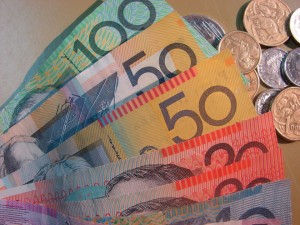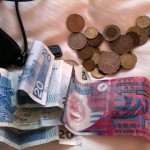 Australian dollar traded higher against its US counterpart on Friday after better than projected import data out of China neutralized the influence of the revised downward growth forecasts by Reserve Bank of Australia (RBA).
Australian dollar traded higher against its US counterpart on Friday after better than projected import data out of China neutralized the influence of the revised downward growth forecasts by Reserve Bank of Australia (RBA).
AUD/USD touched a session high at 0.9480 at 2:37 GMT, after which consolidation followed at 0.9470, rising 0.17% for the day. Support was likely to be received at November 1st low, 0.9422, while resistance was to be seen at November 6th high, 0.9542.
According to data by the Chinese Customs Administration released today, exports climbed 5.6% in October, beating expectations of a 3.2% gain. At the same time, imports rose 7.6% in October, less than projections, pointing an 8.5% gain. This resulted in a trade surplus at the amount of 31.1 billion USD. The Aussie received support after this news, as China is Australias largest export market.
Chinas policymakers are expected to hold a meeting during the weekend to discuss reforms, while a set of crucial economic data, including retail sales and consumer inflation, is to be released out of the country. These data points would certainly influence the Australian dollar on Monday.
On the other hand, Australian economic growth is seen to be between 2% and 3% during the year to December 2014, according to RBAs quarterly monetary policy statement. A forecast three months ago pointed a growth between 2.5% and 3.5%. RBA Assistant Governor Guy Debelle said on Thursday, at an International Monetary Fund conference in Washington, that external financial factors were behind rising currency values, something experienced by Australia and other smaller economies.
The yield on Australian 10-year government bonds dropped three basis points to reach 4.13%, advancing from 4.07% registered on November 1st.
Meanwhile, yesterday it became clear that US economy expanded at a sharper than expected rate during the third quarter of the year. Nations Gross Domestic Product rose at an annualized rate of 2.8% in Q3, following the 2.5% expansion in Q2, and marking the best quarterly performance this year. Expectations pointed a 2.0% increase in GDP. This report has been delayed due to the 16-day partial government shutdown in the country, but however, it encompasses all fundamental data. Consumer spending, which comprises over two thirds of US GDP value, rose 1.5% during the third quarter of the year, marking the slowest annual rate of increase during the past three and a half years. In Q2 consumer expenditures increased 1.8%. US consumers have spent more on durable goods and less on services.
This strong GDP report may lead to an “upward surprise” in the nonfarm payrolls figure, although the rate of unemployment may rise, according to Richard Grace, the Sydney-based chief currency strategist at Commonwealth Bank of Australia (CBA). “We’ll see a mixed message in the labor market,” Grace said, cited by Bloomberg News. “The volatility in the unemployment rate is less likely to last and can be somewhat explained by the partial government shutdown. Hence we see upside risk to the U.S. dollar.”
In addition, the number of the initial jobless claims in the country, an indicator gauging lay-offs, decreased by 9 000 to 336 000 during the week ending on November 2nd 2013. Experts had anticipated a larger drop, to 335 000. Previous weeks number of claims has been revised up to 345 000. The average number of claims during the past four weeks, an indicator considered as lacking seasonal effects, dropped to 348 250. Despite these signs of an improving labor market in the United States, the overall state of employment still remains relatively weak.
Elsewhere, the Aussie was higher against the euro, with EUR/AUD cross down 0.18% on a daily basis to trade at 1.4170 at 7:57 GMT. AUD/NZD pair was losing 0.13% to trade at 1.1350 at 7:59 GMT.





